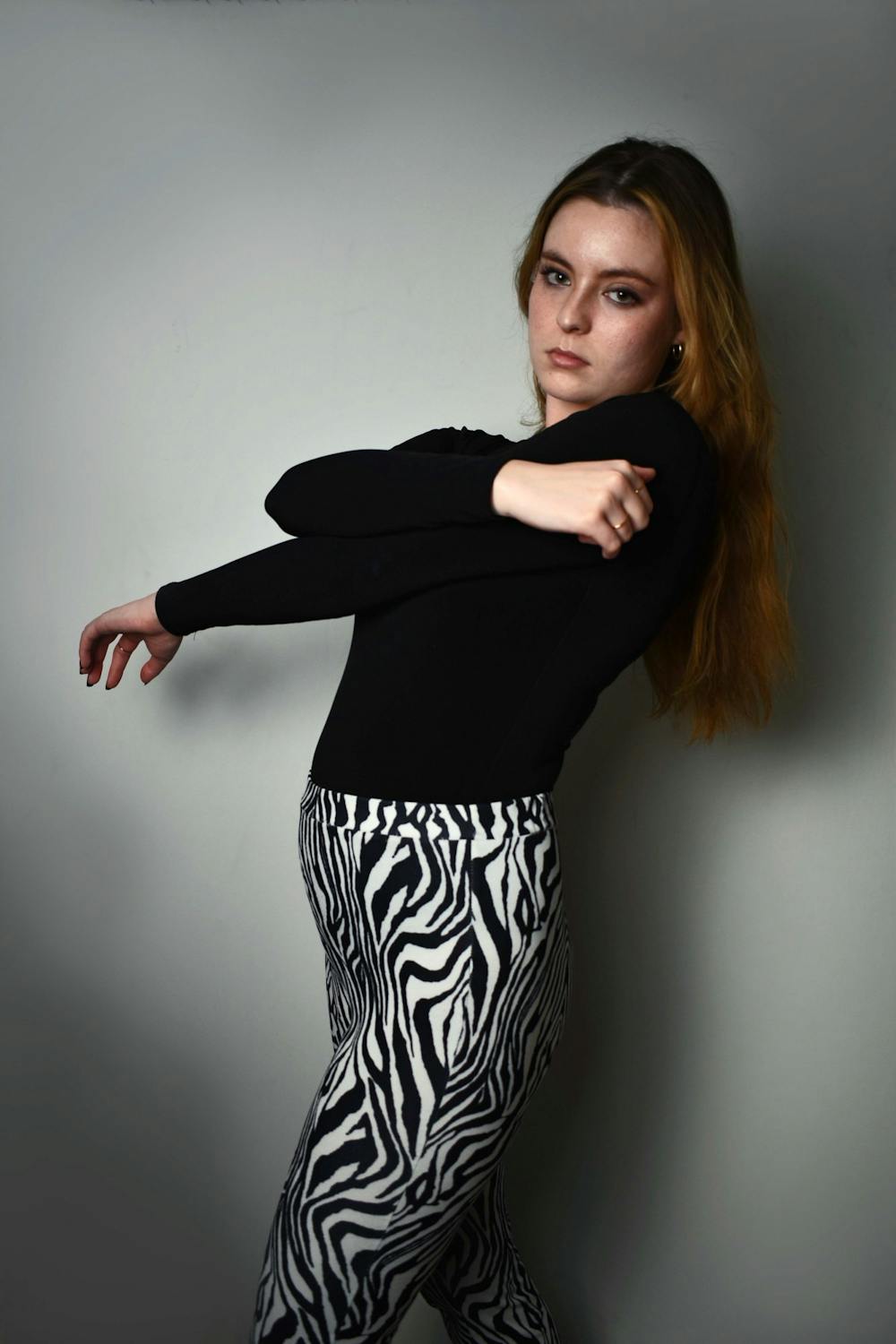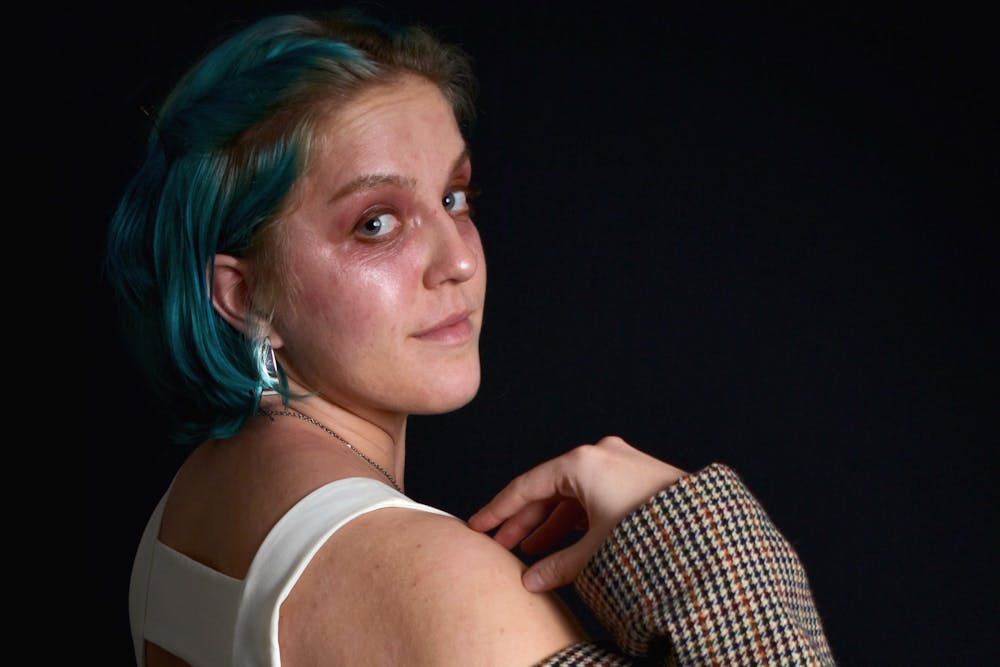
"You dress gay," a stranger observes, her eyes following every inch of my straight, opposite-sex-loving body until they reach my six-inch heels.
It’s obvious: she is playing tug of war between my outfit, gender and sexuality. And while the stare isn’t ideal, it is something I have learned to deal with. But this time I’m not just greeted by the stare, it was followed by that observation.
That particular observation is all the fuel I require to cold-water soak a stranger because what does it mean to dress gay?
Dressing gay is wearing “something eye-catching with lots of flare,” UofSC sophomore, Andrew Peters, said. “Usually accessorized, with lots of different parts.”
However, not all UofSC students agree.
Some UofSC students believe that 2020 began the era where limitations or separations between garments based on different genders became an outdated notion.
These students argue that clothes are mere fabric additions to one's body; they cannot define the personality, sexuality, individuality or intention of the person that’s wearing it – but they can enhance it.
The bottom line: Fashion is physical art. Sexuality is abstract art.
Since this is a safe space, I’ll tell you one of my darkest secrets: I applauded Harry Styles' 2021 Vogue Cover. You may be thinking, “duh, me too!” But hold your horses, because this is where fashion gets bumpy. There is no need to applaud a man in a dress, even if that man is the icon that is Harry Styles!
"I'm not just sprinkling in sexual ambiguity to be interesting," Styles said. "I want things to look a certain way. Not because it makes me look gay, or it makes me look straight, or it makes me look bisexual, but because I think it looks cool."
Though Styles is the face of his style, without his team of designers and stylists, the image of feathered boas and funky printed pants would not be reaching our eyes.
Jean Paul Gaultier, a French designer, was one of the first designers to consistently break down gender stereotypes. Gaultier's most controversial designs included men in plaid skirts, open-toed platform basketball sneakers, sarongs, tank tops and see-through harem pants. These pieces prompted The Times's fashion critic, Bernadine Morris to ask: "If it's all right for women to wear fully-tailored clothing, why isn't it all right for men to wear skirts?"
"Wearing a skirt doesn't mean you're not masculine," Gaultier responded. "Masculinity doesn't come from clothes. It comes from something inside you. Men and women can wear the same clothes and still be men and women."
The slow realization that clothes do not determine or take away from one’s masculinity or femininity has allowed artists to push boundaries and express themselves in pieces that are typically un-thought of.
Prince, the acclaimed singer, expressed himself through feathers, glitter and "feminine silhouettes." His expression through makeup, heels and flamboyant clothes caused the 1970's mainstream American media to label him as gay. With the assumption in the late 1970s and 1980s that Prince was gay gaining more attention, Prince responded artistically by releasing his 1981 album titled Controversy. The album leaned into the rumors and speculations about his identity through lyrics such as, "Am I black or white / Am I straight or gay / I'm not a woman, I'm not a man / I am something that you will never understand."
When asked in 1997 during an interview on VH1, comedian Chris Rock asked: "Was [your fashion] an act, or were you searching for your sexual identity?"
At this time, this sentiment was not easily understood by the American public as one's gender identity, sexual identity and artistic persona were often conflated.
In our current digital age, the artistic persona is all about crafting a style that can be branded but also gives flexibility for its audiences to try for themselves.
"I absolutely love seeing people becoming more and more fearless about embodying authenticity, especially when the gender norms are snapped in half," Meghan Kennedy, a writer for the Central trend, wrote in 2021. "All in all, just let anyone wear whatever they want because clothes do not define gender in any way, shape or form."
The final verdict: clothing is gender-fluid.
The question burning on everyone's tongue: is clothing sexuality fluid?
"Finding happiness in dressing as a woman and being attracted to men are two separate things. One has to do with your own gender expression and the other has to do with who you are attracted to," Laura Anna Stuart, a journalist for Shepherd Express, wrote in 2013.
Bisexuality is a sexuality; not a fashion trend.

Individuals who are bisexual do not dress any differently than straight or gay people. In general, most people do not choose their clothes based on who they decide to get freaky with.
Thus, fashion is not confined to gender or sexuality.
Knowing this, remember that you are the only one who is entitled to choose what to wear or how you define yourself.
But, as the 21st century has broken down many gender stereotypes, gay fashion stereotypes still exist.
UofSC sophomore, Jordan Murphy said “cuffed jeans, Doc Martens and flannels” are most commonly associated with the LGBTQ+ community.
In the 1960s, Doc Martens were first released to the American public. These military-style shoes gained their moment in the spotlight within many realms including activists, punks and the queer community.
"A big factor in their adoption by those on the margins of society was their price tag, accessibility and availability in second-hand shops," journalist Alexis Zygan wrote in 2021 for Capilano Courier. Women who were more likely to work nontraditional jobs in male-dominated fields such as skilled labor wore Doc Martens, often pairing them with a flannel, jeans and a carabiner attached to the belt loop.
In 1976 a "which shoes fit you," headline appeared in a Dyke Quarterly magazine intended for queer women. The ad had an image of a wedged heel as Option A and a 10-eyelet Doc Martens boot as Option B. Underneath the two images, the caption read, "If you choose Option B then Dyke Magazine may be for you. A new magazine of Lesbian culture and politics."
By the 1990s, Option B wasn't picked because it was the lesbian choice, but rather due to its increasing popularity among teenagers within the 1990s Grunge community.
Still though, pieces like the Doc Martens and flannels on their own do not automatically mean someone is gay or straight if they decide to wear them.
“We’re as varied and as blended as the rainbow itself,” author Joi Miner wrote about the LGBTQ+ community in Reckonsouth in October of 2021. “Even those who fit in those basic gay stereotypes have layers to their preferences that appearance won’t easily reveal. I can tell you, and the world is slowly showing us all, that our preconceived notions can be very, very wrong.”
"I think it can show different aspects whether you feel more masculine or feminine and how you want to express those sides," UofSC student, Molly Corcoran, said.
Because there is no concrete definition of gay fashion (and I hope there will never be), for some individuals in the LGBTQ+ community, presenting themselves as gay has been a challenge.
“I’ve tried to change my accessories,” Miner wrote. “I tried boy clothes, but they weren’t flattering to my figure, and boxer briefs aren’t my swag. I spend hours a day trying to figure out how to 'look' more gay. I sport everything to advertise my gayness from bracelets to gay-centric tees to a rainbow lipstick kiss tattoo on my neck to rainbow hair."
To remedy the issue presented by Brammer, some individuals of the gay community have emphasized finding their personal style while adhering to some of the gay fashion stereotypes. This compromise has brought comfort to individuals as their outfits can be a calling card for other queer people, allowing them to build communities built on acceptance and genuineness.
"People should be allowed to dress however they please without anyone else making split-second judgments of them," Froidl wrote. "If you want to wear skirts, wear skirts. If you want to wear button-downs, wear buttons-downs. Don't let society's expectation of your gender dictate what you wear."
But in the end, I'll leave you with this: don’t be that pest that asks someone else why they are dressing gay. Instead, better yet, ask yourself what it means to dress straight.



